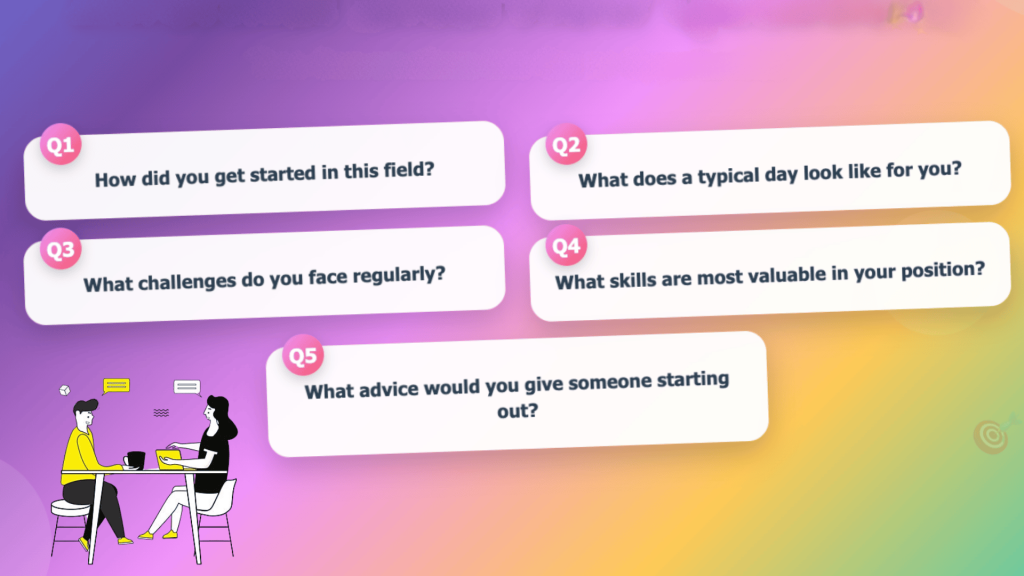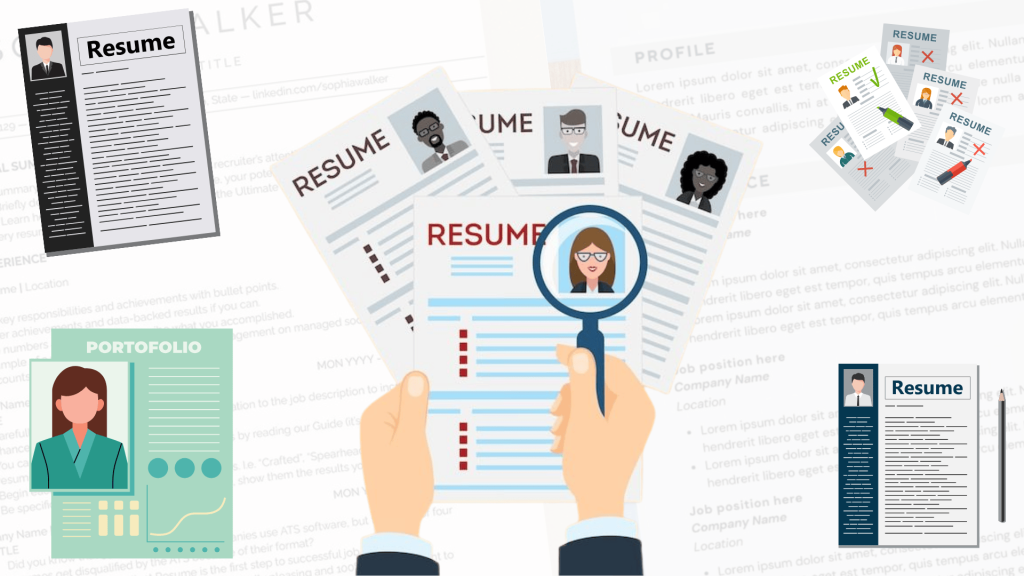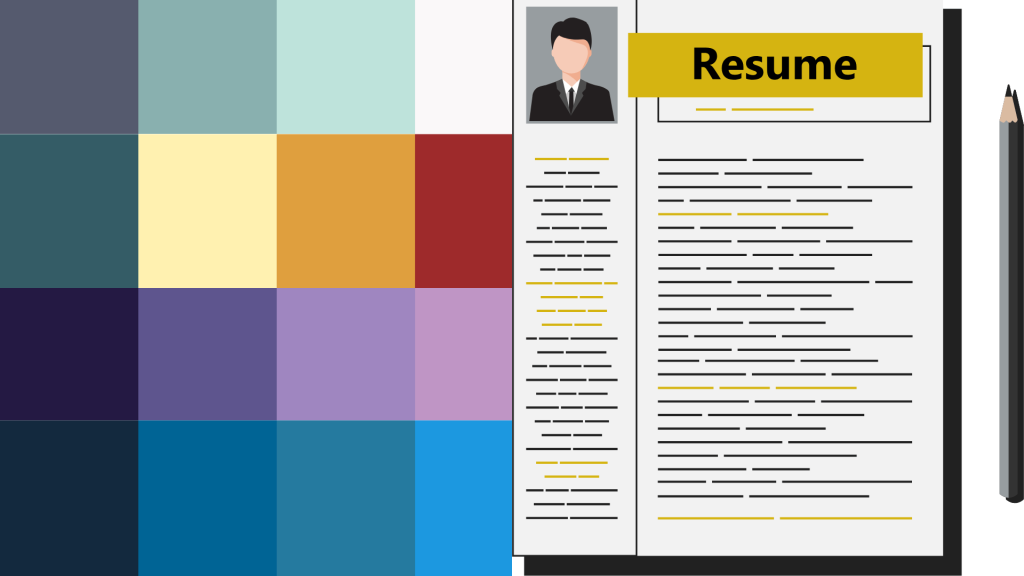Family leave for both mothers and fathers has become increasingly important as companies seek to support employees and families pursue work-life balance.
Understanding the distinctions between maternity and paternity leave is essential for working parents.
What is Parental Leave?
Parental leave encompasses time off work for childbirth, adoption, or family caregiving.
This includes maternity leave (for mothers), paternity leave (for fathers), and arrangements allowing employees to bond with children or support family members during critical periods.
This article examines key differences, legal protections, and eligibility requirements nationwide.
What is Maternity Leave?
Maternity leave refers to the time off work granted to mothers before and after childbirth.
The primary purpose is to allow new mothers to recover physically from pregnancy and delivery while bonding with their newborn children.
This leave period acknowledges the medical necessity of recovery time following childbirth and supports the establishment of breastfeeding routines.
Duration and Time Periods
In the United States, FMLA provides up to 12 weeks of unpaid leave, though some states and employers offer more generous paid benefits.
Payment and Financial Benefits
Financial support options include short-term disability benefits, paid family leave programs in certain states, and employer-provided paid leave policies.
Many mothers must rely on unpaid FMLA leave, though some states and employers provide partial wage replacement.
Who Qualifies for Coverage
Eligibility criteria for maternity leave typically require employees to have worked for a covered employer for at least 12 months and completed 1,250 hours of service during that period.
*Company size and specific state regulations may also affect eligibility requirements.
What is Paternity Leave?
Paternity leave is the time off work granted to fathers following the birth or adoption of a child.
This leave allows fathers to bond with their newborn, support their partner during recovery, and participate actively in early childcare responsibilities.
The recognition of paternity leave reflects growing awareness of fathers’ important role in early child development.
Duration and Available Time
While FMLA provides fathers the same 12 weeks as mothers, many employers offer shorter paternity leave periods, and fathers often aren’t aware of their full entitlements.
Payment Differences and Disparities
The amount of paid paternity leave often differs significantly from maternity leave benefits.
Many employers that offer paid maternity leave may provide less generous or no paid paternity leave options.
This disparity reflects traditional workplace attitudes that are slowly evolving.
Qualification Requirements
Eligibility criteria for paternity leave mirror those required for maternity leave under federal law.
Fathers must work for covered employers for at least 12 months and complete 1,250 hours of service during that period, with the same company size requirements applying.
Maternity vs Paternity Leave Statistics
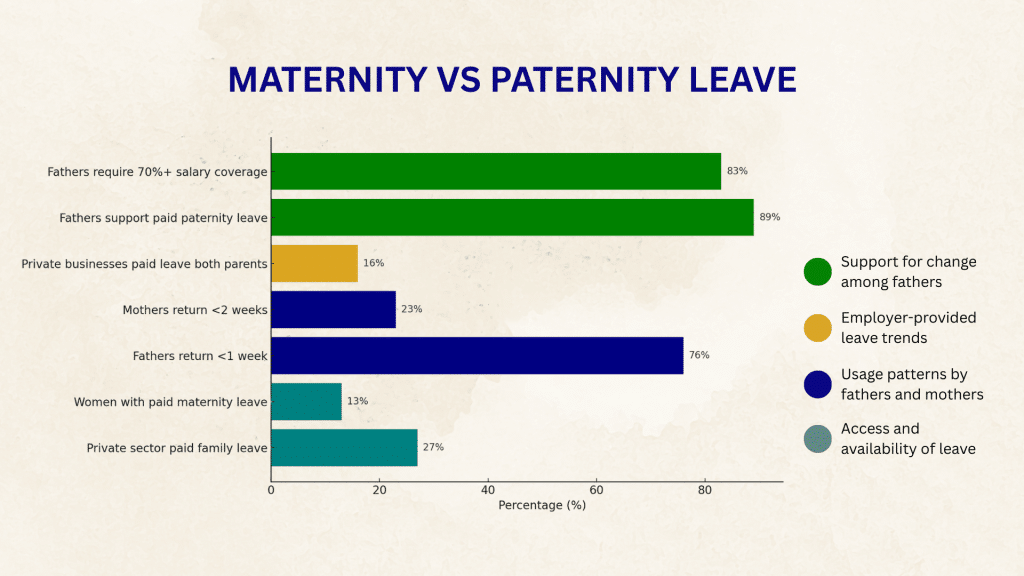
The numbers reveal significant disparities in how maternity and paternity leave are accessed and utilized in the United States.
Access and Availability
- 27% of private sector employees have paid family leave access.
- 13% of women have paid maternity leave in the private sector.
- The US is the only high-income country without federally paid maternity leave.
- 13 jurisdictions (12 states + DC) offer paid family leave laws.
Usage Patterns
- Fathers take 10 days off on average (despite 12 weeks of FMLA availability).
- 76% of fathers return to work within one week.
- US paternity leave average: 1 week vs EU average: 6.3 weeks.
- 23% of mothers return to work after 2 weeks.
Employer Trends
- Top workplaces: 15 weeks maternity leave, 12 weeks paternity leave.
- 16% of private businesses offer paid leave for both parents.
- The gap between the best employers and the average employers remains significant.
Support for Change
- 89% of fathers support employer-provided paid paternity leave.
- 83% of fathers require 70%+ salary coverage to take leave.
- Strong support exists despite low current usage rates.
Maternity Leave and Paternity Leave: Differences
While both types of parental leave serve important purposes, significant differences exist in how they are implemented and supported in most workplaces.
| Aspect | Maternity Leave | Paternity Leave |
|---|---|---|
| Duration |
Typically longer due to recovery needs. Progressive employers offer equal periods. |
Usually shorter despite the same 12-week federal entitlement. |
| Eligibility | Automatically provided and well-understood. | May require extra steps, less advertised. |
| Legal Protections | Stronger protections, especially for health recovery. | Same federal laws, but less automatic acceptance. |
| Financial Support | More likely to be paid through disability or specific policies. | Often unpaid, with fewer support options. |
| Cultural and Workplace Differences | Generally accepted across industries. | Varies by industry; traditional workplaces are less supportive. |
Parental Leave: Global and Regional Comparison
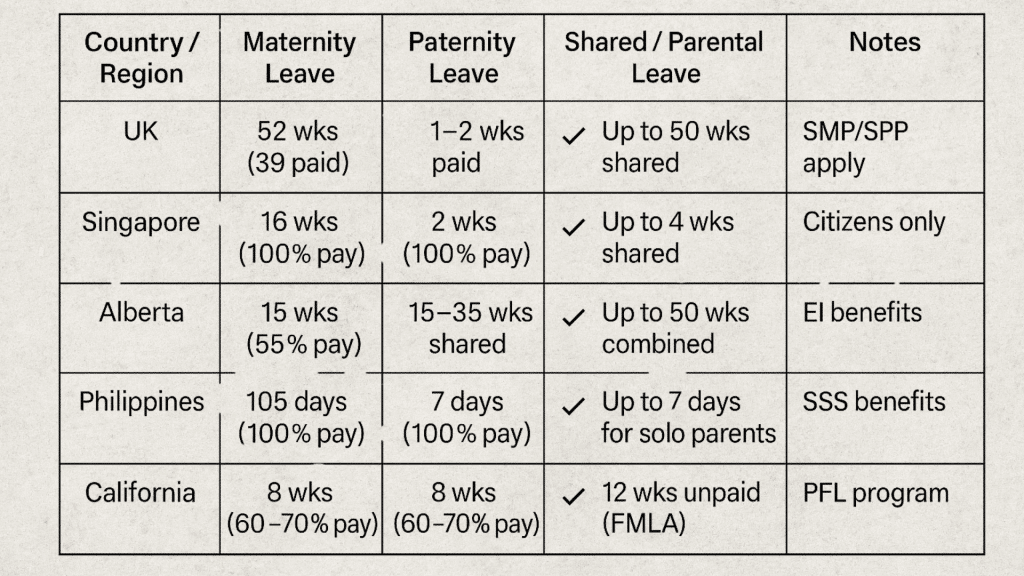
The global landscape reveals significant disparities in how countries support new families, with some nations leading in comprehensive benefits while others lag behind international standards.
- Best Overall Benefits: The Philippines and Singapore offer full salary replacement during leave periods, while Alberta, Canada, provides the most flexible shared arrangements.
- Longest Duration Leaders: Maternity leave and paternity leave UK policies offer the most extensive time off, with 52 weeks total availability and flexible sharing options.
- Equal Treatment Pioneers: California leads US states in providing equal 8-week allocations for both parents, while Singapore approaches gender parity with expanding paternity benefits.
- Areas Needing Improvement: US federal policy remains significantly behind international standards, requiring state-level solutions like California’s PFL program to fill gaps.
Legal Rights and Protections for Maternity and Paternity Leave
Both mothers and fathers are entitled to specific legal protections when taking parental leave, ensuring job security and preventing workplace discrimination.
1. Job Security
Both FMLA and state mandates ensure job protection during approved leave periods.
Employees have the right to return to their same position or an equivalent role with the same pay, benefits, and working conditions.
This protection applies equally to mothers and fathers taking parental leave.
2. Non-Discrimination
Legal protections prevent discrimination based on taking maternity or paternity leave.
Employers cannot retaliate against employees for exercising their rights to parental leave, and pregnancy discrimination laws provide additional protections for expectant and new mothers.
3. Return to Work Rights
All eligible employees have guaranteed rights regarding their return to work after parental leave.
This includes restoration to the same or equivalent position and continuation of health insurance benefits during leave periods.
4. Paid vs. Unpaid Leave
While federal law only guarantees unpaid leave, various state programs and employer policies provide paid family leave options.
The combination of available benefits helps parents maximize their financial support during leave periods.
Challenges with Maternity and Paternity Leave

Despite legal protections, both mothers and fathers face significant obstacles when taking parental leave that can impact their careers and financial stability.
Maternity Leave Challenges
- Pay gaps during unpaid leave periods
- Workplace bias upon return to work
- Difficulties with career advancement
- Complex return-to-work transitions due to childcare needs
- Physical recovery requirements
- Financial pressure to return earlier than medically recommended
Paternity Leave Challenges
- Limited leave time compared to mothers
- Societal expectations that minimize the caregiving role
- Workplace policies do not fully embrace paternal involvement
- Workplace culture discourages full leave entitlement
- Concerns about negative career impact
Global Variations
Policies and practices differ dramatically worldwide.
European countries often provide more generous parental leave benefits for both parents, while developing nations may have limited protections.
The U.S. lags behind many developed countries in providing paid parental leave benefits.
Recent Changes in Paternity and Maternity Leave Policies
The landscape of parental leave is rapidly evolving, with both government initiatives and corporate leadership driving improvements in benefits and equality for all parents.
1. Improving Equality
Recent years have seen progress toward equalizing paternity and maternity leave benefits.
More employers recognize the importance of supporting both parents and are implementing gender-neutral parental leave policies that offer the same benefits regardless of the parent’s gender.
2. Corporate Initiatives
Many companies now offer more flexible leave options to both mothers and fathers.
Tech companies and other progressive employers have led the way in providing generous paid parental leave benefits.
It creates pressure on other industries to compete for talent by improving their benefits packages.
3. Government Action
Several states have expanded parental leave benefits through legislation creating paid family leave programs.
These initiatives recognize the economic and social benefits of supporting new families.
They aim to reduce the financial burden of taking time off for childbirth and bonding.
Conclusion
The key differences between paternity and maternity leave help new parents make informed decisions about their leave options.
While maternity leave traditionally receives stronger protections, paternity leave rights continue expanding as employers recognize the benefits of supporting both parents.
Research your workplace policies and federal and state laws to access available benefits.
Share your experiences to help other families and improve workplace support.
Take action today!
Review your employee handbook, consult with HR about parental leave options, and plan your leave strategy.
Frequently Asked Questions
Can Both Parents take Leave at The Same Time?
Yes, both parents can take FMLA leave simultaneously. However, if both work for the same employer, they may be limited to a combined total of 12 weeks for the birth of a child.
What Happens if I Need to Extend My Leave Beyond 12 Weeks?
After the FMLA expires, you may use accrued vacation time, personal days, or unpaid leave if your employer allows. Some state programs offer longer leave periods than federal requirements.
Can Paternity Leave Be Extended or Combined with Other Leave?
Fathers may combine FMLA leave with vacation time, personal days, or other benefits, depending on company policies. Some parents coordinate their leave periods to extend family time.
What Documentation Is Required for Parental Leave?
Employers may require medical certification for the birth, adoption papers for adoption, and periodic recertification. Check your company’s specific documentation requirements.






